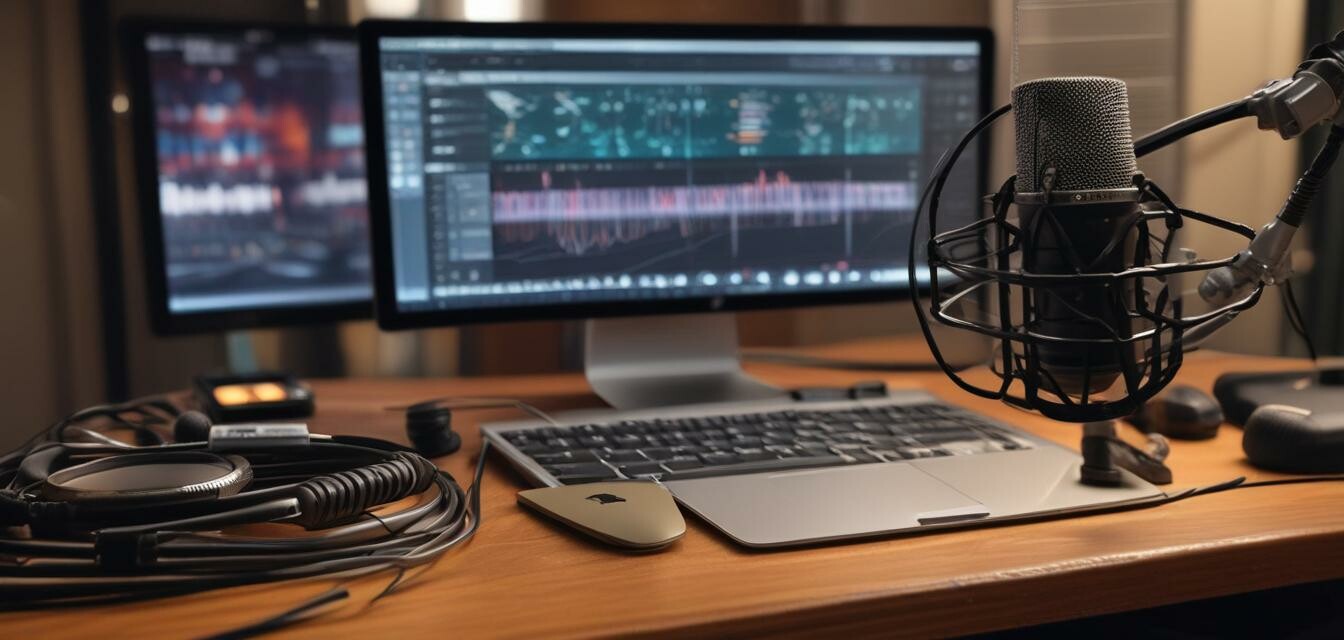
How to Create the Perfect Podcasting Setup
- Choosing the right equipment is essential for sound quality.
- Optimize your recording environment to reduce background noise.
- Editing and post-production are critical steps in the podcasting process.
- Investing in good software can make a significant difference.
- Consistency in format and branding is key to growing your audience.
Podcasting has grown tremendously, offering a platform for individuals to share their stories, expertise, and creativity. For those looking to create high-quality audio content, it is essential to establish a solid podcasting setup. This guide will outline the necessary gear and tips to help you create the perfect podcasting studio to enhance your recording quality.
Essential Podcasting Gear
Your podcasting setup begins with the right equipment. Here’s a breakdown of must-have gear:
| Equipment | Description | Recommended Brands |
|---|---|---|
| Microphone | Essential for quality audio; consider a dynamic or condenser microphone. | Shure, Audio-Technica |
| Audio Interface | Connects your microphone to your computer with higher sound quality. | Focusrite, PreSonus |
| Headphones | Isolates sound to monitor audio levels and quality during recording. | Sony, Sennheiser |
| Pop Filter | Reduces plosives and unwanted noise. | Heil Sound, Aokeo |
| Sound Mixer | Allows you to adjust each audio source and improve sound quality. | Yamaha, Behringer |
| Recording Software | Software to record and edit your podcast. | Audacity, GarageBand |
Optimizing Your Recording Environment
The environment where you record your podcast plays a crucial role in achieving high-quality sound. Here are some tips to optimize your recording setup:
- Find a Quiet Space: Select a room with minimal background noise.
- Use Soundproofing: Consider foam panels, carpets, and curtains to absorb sound.
- Reduce Echo: Record in smaller rooms with furniture to mitigate echoes.
- Minimize Interruptions: Inform household members of your recording schedule.
Editing and Post-Production Tips
Editing is where your podcast truly comes together. Here’s how to do it effectively:
- Choose the Right Software: Use software like Audacity or GarageBand for audio editing.
- Remove Unnecessary Audio: Cut out long pauses, filler words, and mistakes.
- Add Intro and Outro: Introduce your podcast with a catchy intro and include a closing statement.
- Adjust Audio Levels: Ensure consistent volume across episodes.
Tips for Consistency and Growth
Creating a successful podcast involves more than just recording quality content. Here are additional tips to foster growth:
- Develop a Branding Strategy: Create cover artwork and theme music to establish brand identity.
- Consistency is Key: Release episodes on a regular schedule to retain your audience.
- Engage with Listeners: Make sure to connect with your audience through social media and email.
- Seek Feedback: Regularly ask for feedback to improve your content.
TOPTRO TR27 Mini Projector
With native 1080P support, Bluetooth connectivity, and an adjustable stand, this projector is perfect for creating a cozy podcasting backdrop.
Learn MoreConclusion
Starting a podcast can be a rewarding venture if done right. Investing in the right equipment, creating an optimal recording environment, and producing quality content are fundamental for your podcasting journey. Explore our comprehensive tutorials in the How-to Guides section to further refine your skills and techniques.
Beginner Tips
- Start with basic equipment and gradually upgrade.
- Practice before your first recording to become comfortable.
- Keep your podcast episodes engaging and value-driven.
- Don’t hesitate to collaborate with other podcasters!
Pros
- Allows for creative expression.
- Can reach a wide audience.
- Opportunity for networking with other creators.
Cons
- Can require a significant time investment.
- Initial setup costs can be high.
- Pacing and technical difficulties during recording.

